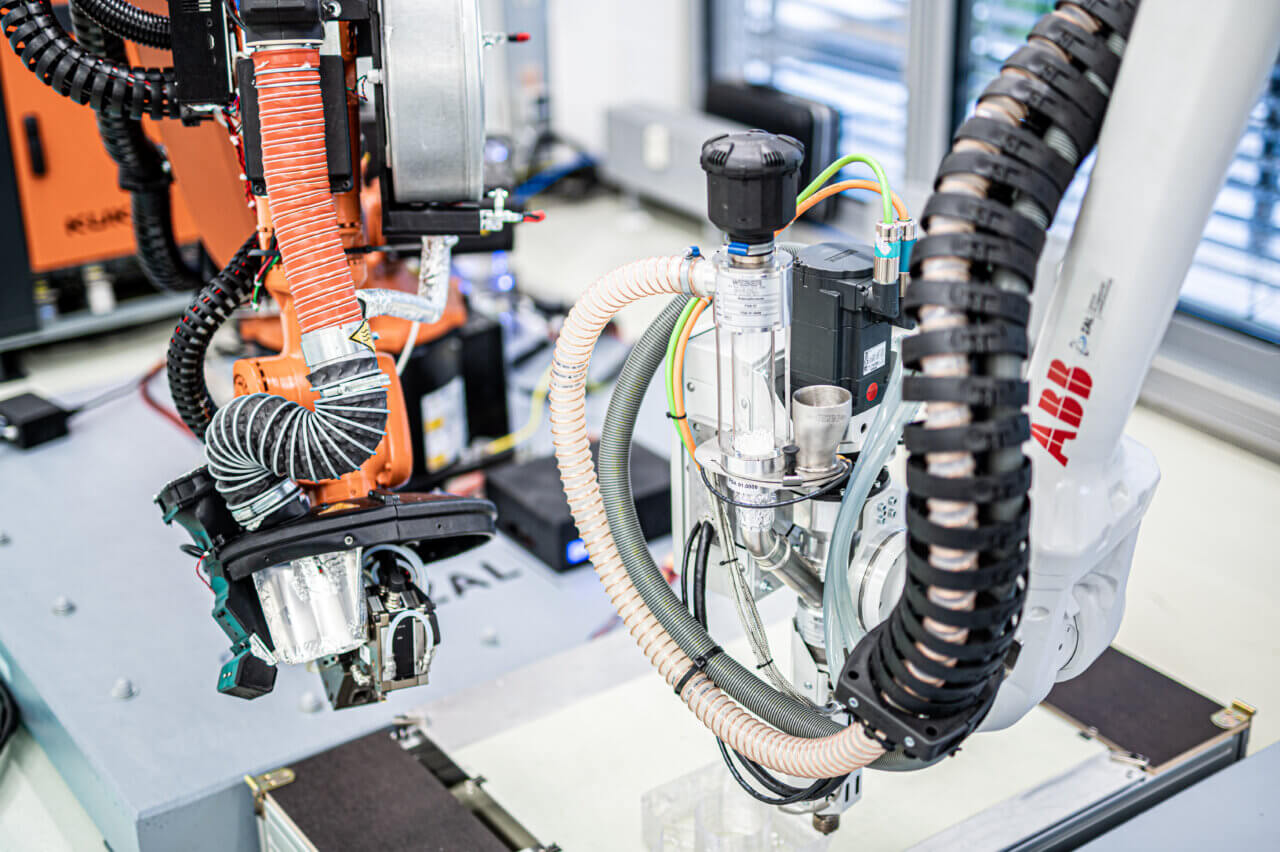The RAFINESS research project – short for robot-guided additive manufacturing of integrated, sustainable, and electrically conductive interfaces for cabin sandwich structures – is concerned with new fastening systems. These are used to connect components of the cabin to the fuselage structure of the aircraft. The RAFINESS team is investigating how these connectors can be intelligently manufactured using the example of an overhead bin.
Current status in aircraft construction
Currently, this is still a manual process, as the operation is individual to each aircraft cabin. Openings are milled and corresponding mounting points are glued in place. After a cabin structure is installed inside the aircraft, the next step is for an electrician behind the installation to connect the cables for power and data.
The project goal
The joint project, initiated by SFS Intec, aims to develop a completely new and holistic concept for mounting systems. These are to be automatically printed onto the overhead bin using additive manufacturing. The project team is therefore automating the entire manufacturing process, thus reducing the individual small work steps. At the same time, the connectors were to be enhanced with power and data supply.
The focus of ZAL GmbH
At RAFINESS, the team at ZAL GmbH is focusing on automated printing on existing structures (in this case, the overhead bin) using two cooperating six-axis robots. One robot system prints the structural material, while the other robot performs supporting tasks such as printing conductive traces. This process must be precisely tuned and coordinated.
More sustainability
The fastening systems should end up being made from a more sustainable material. The car structure will remain in the car for 7 to 10 years. At the latest with the Level D check, in which an aircraft is completely inspected once, the entire cabin is taken out to check all aluminum parts. In most cases, a new cabin is then installed and the old cabin material is disposed of. Current fastening systems consist of many different materials and individual parts and are firmly bonded to the cabin structure, which makes material separation and recycling difficult. RAFINESS’ approach is not only to streamline and automate the whole process but also to use more sustainable polymers. Materials that can eventually be recycled thermally, and where a proportion is based on renewable raw materials. The goal is to use at least 50% bio-based polymers and reduce the carbon footprint by 30% compared to the conventional manufacturing process.
Challenges
Safety and fire safety requirements must be taken into account when redesigning the connectors. The challenge also lies in printing mechanically stressed fastening systems. Producing visually appealing and large parts using additive manufacturing is common practice. Producing components, on the other hand, that have to withstand mechanical stress and are safety-relevant – that’s the next step. To ensure that the component can withstand the required loads, the team must closely monitor the entire printing process and measure the parameters. The connectors and the luggage compartment are tested with nine times the weight load than they normally have to hold. That means if you have an overhead bin on the plane with 100 kg floating overhead, the attachment points have to withstand 900 kg. That’s enormous for plastic components. But that’s also part of the holistic approach in the RAFINESS project.
Do you find our additive manufacturing projects exciting and would like to learn more? Give us a call, we’ll be happy to help!
Contact RAFINESS:
Dr. Jan-Ole Kühn
Technical Manager
+49 40 248 595-152
Partners:
Fraunhofer-Institut für Fertigungstechnik und Angewandte Materialforschung IFAM, Fraunhofer-Institut für Umwelt-, Sicherheits- und Energietechnik UMSICHT, SFS Intec
RAFINESS is funded by the German Federal Ministry of Economics and Climate Protection on the basis of a resolution of the German Bundestag within the 6th Aviation Research Program (2nd call). We expressly thank you for the financial support.





